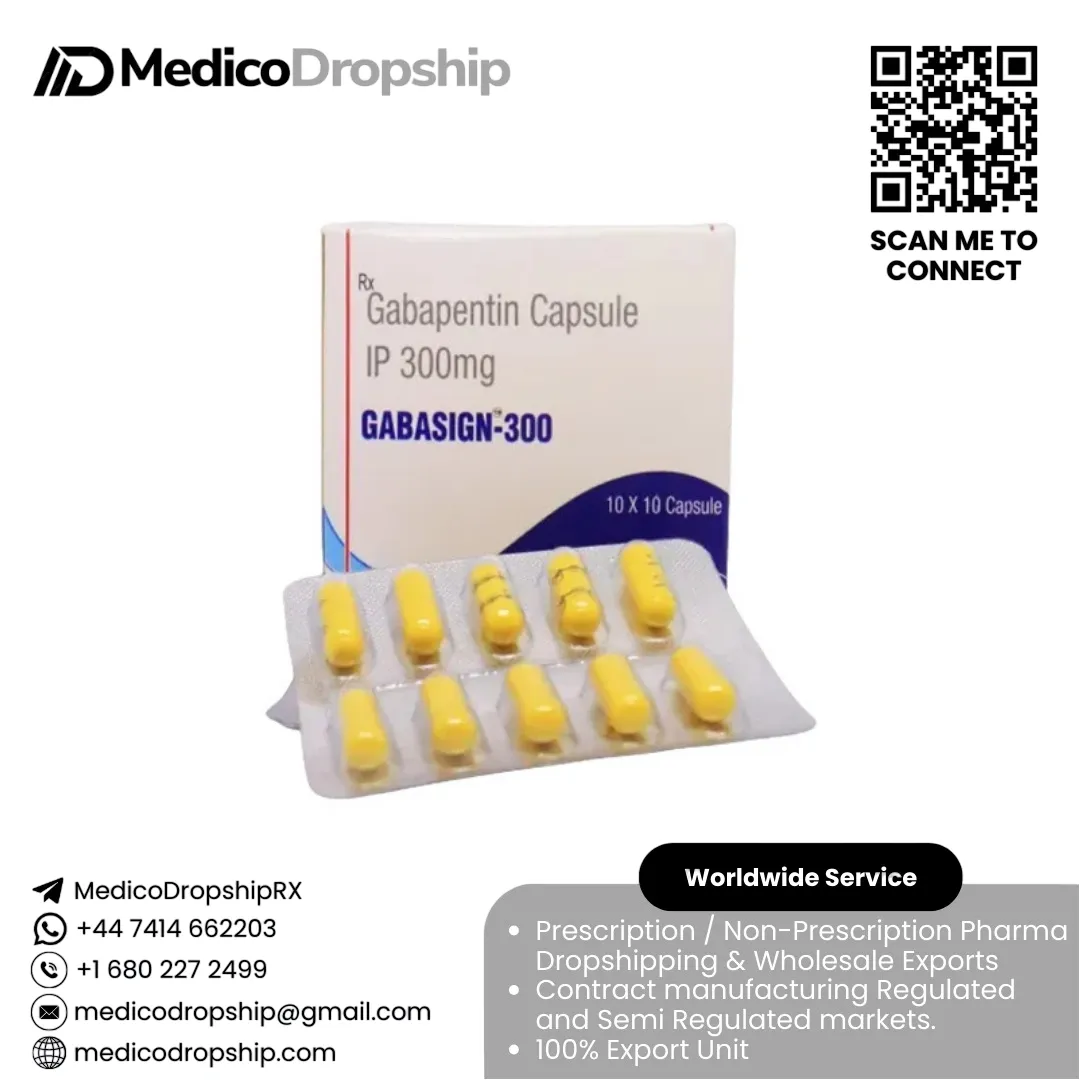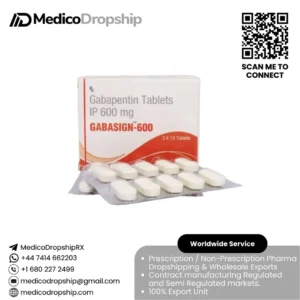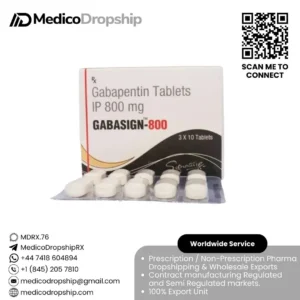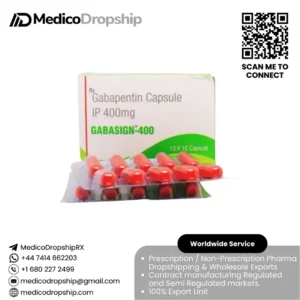💊 Gabasign 300 mg Capsule
Generic Name: Gabapentin
Brand Name: Gabasign 300
Manufacturer: HAB Pharmaceuticals & Research Ltd.
Dosage Form: Oral Capsule
Strength: 300 mg
Drug Class: Anticonvulsant / Neuropathic Pain Agent
Prescription Required: Yes
✅ Therapeutic Uses
Gabasign 300 mg is commonly prescribed for the following conditions:
- Neuropathic Pain: Effective in treating nerve pain due to diabetes, shingles (postherpetic neuralgia), or spinal cord injury.
- Partial-Onset Seizures: Used as adjunctive therapy in adults with epilepsy.
- Fibromyalgia: Helps relieve widespread muscle pain and fatigue.
- Generalized Anxiety Disorder (Off-label): May be prescribed to reduce persistent anxiety symptoms.
⚙️ Mechanism of Action
Gabapentin works by binding to the alpha-2-delta subunit of voltage-gated calcium channels in the central nervous system. This modulates the release of excitatory neurotransmitters such as glutamate and substance P, reducing nerve excitability and alleviating pain, seizures, and anxiety.
💊 Dosage & Administration
- Initial Dose: Often begins with 300 mg once daily, then titrated up based on patient response.
- Maintenance Dose: May range between 900–1800 mg per day, divided into two or three doses.
- Maximum Dose: Up to 3600 mg/day under medical supervision.
- Administration: Swallow whole with water; do not crush or chew.
- With or Without Food: Can be taken with or without food.
- Missed Dose: Take as soon as remembered. If near the time of the next dose, skip the missed dose—do not double up.
Note: Dosage adjustments are necessary in patients with impaired kidney function.
⚠️ Precautions & Warnings
- Renal Impairment: Requires dose modification.
- Pregnancy & Lactation: Use only if clearly needed and prescribed by a healthcare provider.
- Elderly: May be more sensitive to side effects such as dizziness or sedation.
- CNS Depression: Avoid alcohol or sedatives which can enhance drowsiness and dizziness.
- Mental Health: Monitor for changes in mood or suicidal thoughts, especially early in treatment.
❌ Potential Side Effects
Common side effects include:
- Dizziness
- Drowsiness
- Fatigue
- Peripheral edema (swelling)
- Weight gain
- Blurred vision
- Coordination issues
- Dry mouth
Most side effects are mild and tend to diminish with continued use. Notify your doctor if they persist or worsen.
🔄 Drug Interactions
- Alcohol & Sedatives: May enhance sedation.
- Antacids (Aluminum/Magnesium-based): Can reduce absorption of gabapentin—separate administration by 2 hours.
- Other Antiepileptic Drugs: Monitor for possible drug interactions and additive CNS effects.
📦 Storage Instructions
- Temperature: Store at 15°C–25°C (room temperature).
- Storage Conditions: Keep in a dry place, away from moisture and heat.
- Safety: Keep out of reach of children and pets.
📝 Summary
Gabasign 300 mg is a well-established treatment for various types of nerve pain and seizures. Its efficacy and tolerability make it a preferred option for long-term management under medical guidance. Dosage should always be personalized and adjusted based on response and renal function.





